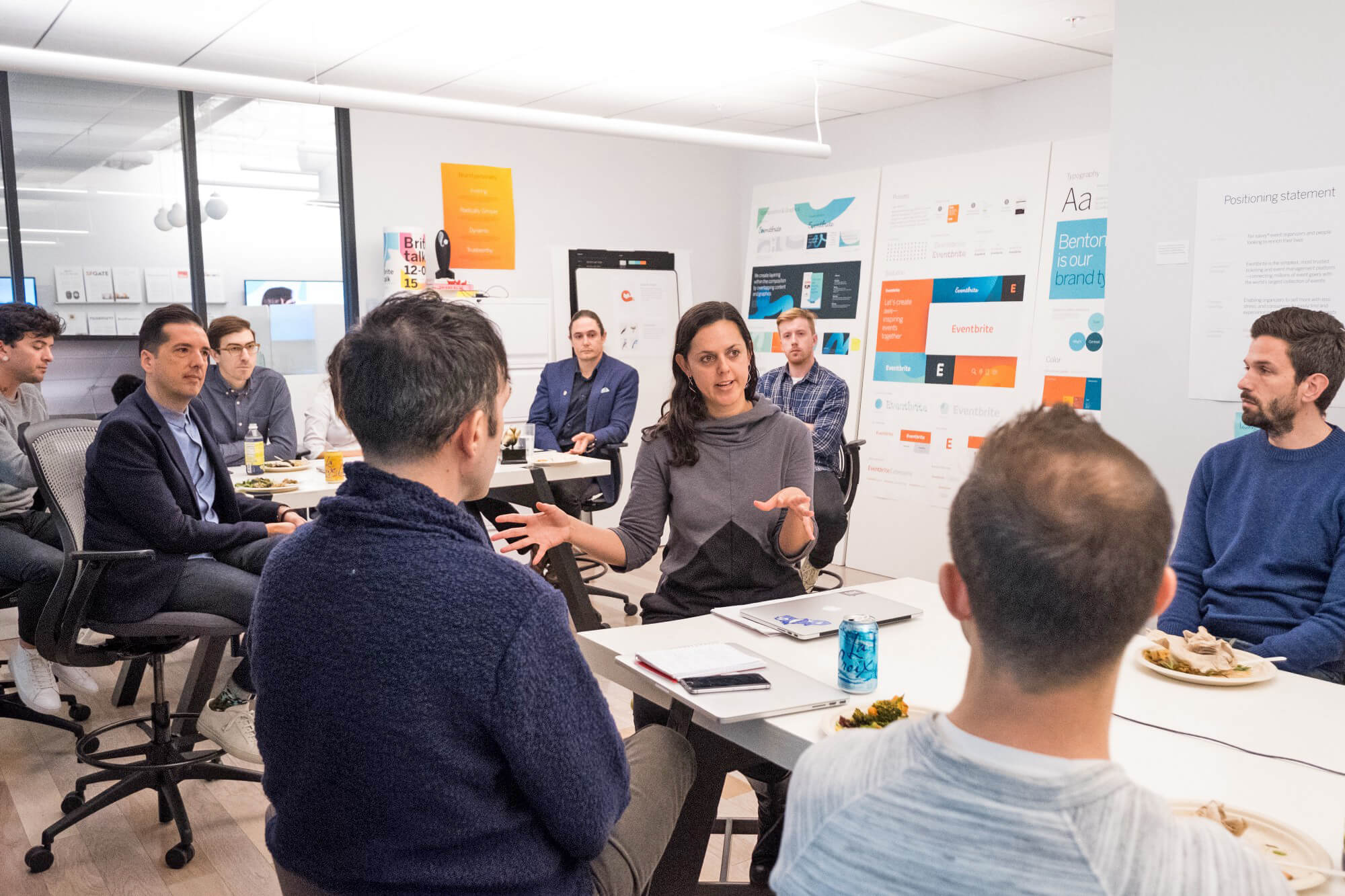When recruiters interview candidates, they seek to find suitable members to join their team to fulfill particular roles and responsibilities. The consultation comprises questions and answers to understand the candidate’s interests, assess skills, and gauge their attitude.
When searching for positions of a professional UX designer in San Francisco, candidates go through many interviews during their job searching process. Some of the interviews pan out great and typically result in being asked to join the team, while others do not go very well and therefore do not result in a company feeling that the candidate is a good match for the position they seek to hire for. However, candidates should not look at the latter experiences as failures but as opportunities to learn and grow.
So how does one rock an interview and land a job at one of the professional UX design companies in San Francisco? Let’s look at five essential tips that will go a long way in helping during an interview process.
Prepare Accordingly
Easily the number one piece of advice for anyone walking into an interview is to go in being prepared. One really doesn’t over prepare for an interview, as the more a candidate knows about the line of work they are interviewing for and the company, the more impressive their candidacy becomes. Luckily, UX is a line of work with troves of knowledge available if one seeks it out.
Of course, if a candidate tries to consume too much content, they will feel overwhelmed. This is natural and can be avoided by finding a handful of good sites with the necessary material that would encompass the essential material that one should know. There might be many questions and answers about careers in UX, so reading through those can be very illuminating in garnering sufficient knowledge and practical experience that one needs to be aware of when interviewing for a UX position.
Seeking out the experiences of other people who interviewed with the employer I am considering is also a good strategy as it can provide a glimpse into what types of questions will be asked. One famous example of a place that can provide such information is Glassdoor. The candidates can find UX interview questions asked by the company’s hiring managers and read reviews from former and current company employees.
Once enough questions have been collected, they should be written out in an orderly fashion and in what would seem to be their logical flow; then, the candidate should devise their unique answers to these questions. These answers should be paired with the questions in the same document to make it easier to draw the associations between the questions and answers. Once the interview is scheduled, these answers can be reviewed multiple times, and their general idea will be fresh in the candidate’s minds when they head in for the interview itself.
Click here – Brand Community: Why and How Should You Build One?
Find Out Everything Possible About The Employer
It is always good to know something about the company with whom a candidate is heading to interview. Logging on to the company’s website and reading about their history, culture, and what they do for their clients will give candidates a more precise understanding of the company’s mission statement and activity. Similarly, it is advised that sites like LinkedIn and Quora also be consulted for these answers.
Armed with all of this research about the company, the next step is to seed one’s portfolio with a variety of keywords linked to the company and the description of the desired position. In doing so, the words will capture recruiters’ attention far more readily and place candidates on the radar for those they might be interested in hiring.
Some companies inform their candidates via email about who will be conducting or sitting in on the interview. Finding out information about the particular interviewees on these people’s LinkedIn profiles can help understand the backgrounds the interviewers are coming from and figure out, see their portfolio work, and learn about their achievements and accomplishments.
In particular, it is advised that when reviewing interviewers’ profiles, candidates pay special attention to feedback these people have offered to others and what is said about them as well. This will be very revealing in finding out about how they work, how they interact with people, and what values they espouse. Knowing these things will help make better-informed decisions about how one chooses to speak to and approach such interviewers. Even more importantly it could spotlight certain negative aspects that may have the candidate reconsider if they want to work for this particular San Francisco UX agency.
Brush Up On Basic UX Concepts
Before heading into interviews at a San Francisco UX firm, it is suggested that candidates brush up on their UX basics. While the candidate might be very experienced in the field, too much practical application of UX concepts can often dull the UX principles initially learned. There might be terminology that one has forgotten as it has not been utilized since they started their career.
It is unlikely that the recruiters will quiz a candidate on their terminology knowledge. Still, when discussing UX concepts, it is always good to use industry terms appropriately for a clearer relaying of ideas and concepts. By using correct language, candidates can illustrate to the interviewers that they are in command of UX on a conceptual level and can communicate with relevant terms to customers.
Play To Your Portfolio’s Strengths
For any UX interview, candidates should come armed with their UX portfolio with all the necessary elements. To compile an impressive portfolio, it is essential to have it organized. It is also necessary to research how other UX professionals explain their portfolio projects. A lot of such portfolios can be found through Dribble and Behance sites.
Candidates should be prepared to discuss how they approach tackling a UX project. In other words, the project’s progression from the idea state, through wireframing, to prototyping, to final design, and finally through revisions based on user feedback should be discussed. Simply presenting many graphic examples of one’s work does not contextualize the portfolio inclusions enough and does not, therefore, show that a candidate understands the UX design process, even if they are familiar with the concepts and the industry jargon.
If a candidate has any client recommendations for their work, including those in the portfolio is always good. Any illustration of how one’s work provides value for both the employer and the clients previously serviced shows that the candidate is a legitimate contributor and can bring substantial value if they become part of the UX team. Any documentation of supporting experiences can only help in illustrating a candidate’s viability.
Answer The Questions Asked
As most people would attest to when asking a question, most people like an answer that is both contextualized but not belabored. Some candidates often go off on tangents in their responses to illustrate their knowledge and understanding of UX concepts. This can, however, serve as more of a detriment as they come off long-winded and seem like they cannot stay on topic. On average, answers to interview questions should be between 1 and 2 minutes long and hit on topics generally relevant to the specific question being asked.
Providing examples that back up answers is always good, but going far down the rabbit hole with any explanation becomes too overbearing for interviewers who are likely sitting on other important questions they need to ask. Substantive answers to interview questions are more impactful and are less bothersome than really long answers that make interviewers feel like the candidate is either showing off or trying to burn through time. Long answers may feel like they show off knowledge of many details, but they are more of a setback than a benefit in the interview process.
Final Thought
To land a UX job with a San Francisco agency, the main thing for a candidate to do is to prepare. This means brushing up on their UX terminology, learning about the company, and the relevant topics about the UX industry.
Also, post-interview follow-ups show the prospective employers that the candidate is still interested and eager to land the job, which always has a positive effect. Regardless of the interview’s success, it is always good to get feedback to better oneself in future interview settings.
Click here – How to Identify Workplace Harassment?





